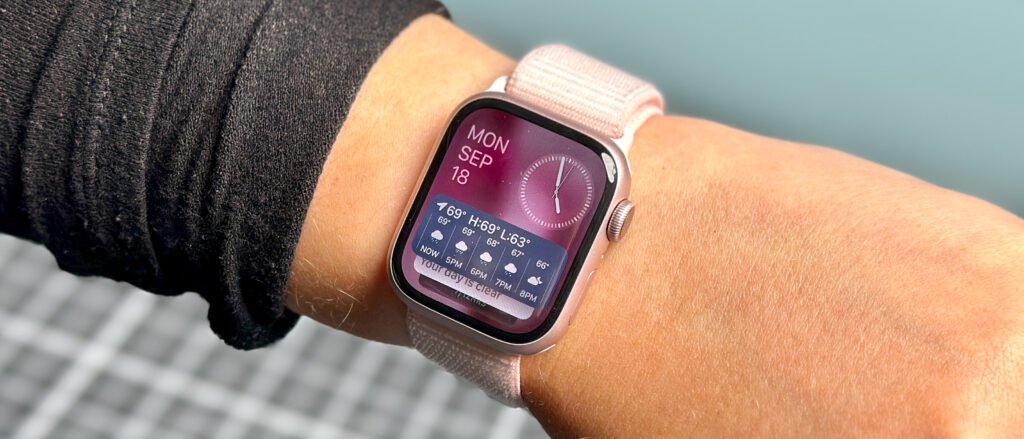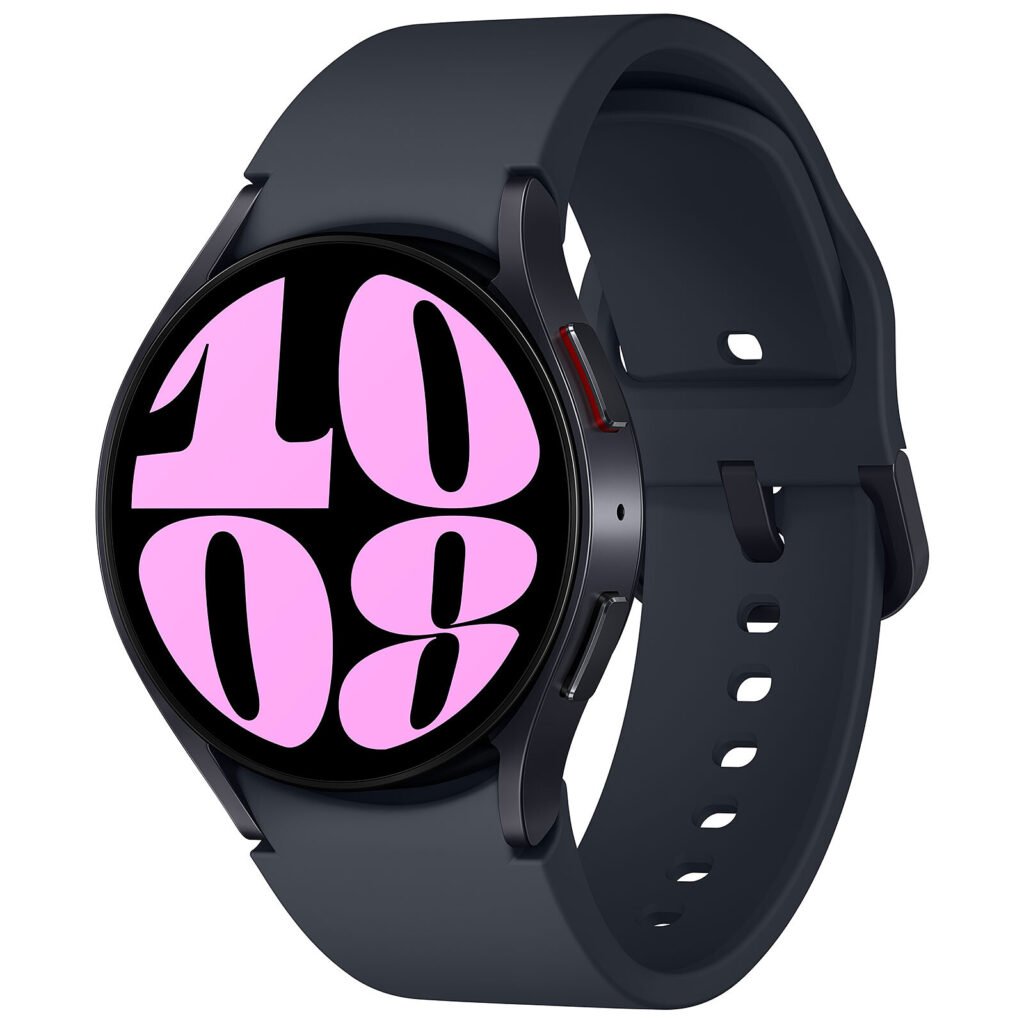Apple Watch Series 9 vs Samsung Galaxy Watch 6 Find out which one comes out on top for both Apple and Android users
The Apple Watch Series 9 and Samsung Galaxy Watch 6 may look similar to their predecessors, but they pack significant performance upgrades and software enhancements. This battle is familiar territory—Apple’s top-tier smartwatch versus Samsung’s best Android option, each excelling in its ecosystem. While the core strengths and weaknesses of both watches remain consistent with past generations, there are some key differences worth noting.
Whether you’re thinking about switching ecosystems or just want to see which brand takes the crown this time, our comparison of the Apple Watch Series 9 and Samsung Galaxy Watch 6 will help you decide which smartwatch is right for you.

Display and battery
The Apple Watch Series 9 continues to offer the same display size and resolution as the Series 7. You can choose between a 1.6-inch (352×430) or a 1.8-inch (396×484) LTPO OLED display, both providing about 326 pixels per inch. Apple has maintained the edge-to-edge design with a minimal bezel, ensuring a sharp and vibrant viewing experience without compromising on the sleek look of the watch. This consistency in display quality means that while the internal performance has improved, the visual experience remains as crisp and immersive as ever.
The Samsung Galaxy Watch 6 and Watch 6 Classic come in two display sizes: 1.3-inch (432×432) and 1.5-inch (480×480). Despite these slightly smaller dimensions compared to Apple’s options, the pixel density remains nearly identical, ensuring sharp visuals on both devices. Samsung has also reduced the display border from the Watch 5, offering an additional 0.1-inch of screen space, making the display feel more expansive with minimal wasted space.
Previously, Samsung had an edge over the Apple Watch Series 8 with its 2,000-nit brightness, but Apple has caught up with the Series 9, matching that level of brightness. Both smartwatches are perfectly readable in bright outdoor conditions, though high brightness can drain the battery more quickly, which might be a bigger concern for Apple’s device.
With both watches now offering excellent displays, the choice comes down to personal preference: the Apple Watch’s squircle design, which efficiently displays more data without cutting off corners, or the Galaxy Watch’s classic circular look. Some consider the Apple design a status symbol, while others might find it less premium than Samsung’s traditional watch aesthetic.

The Samsung Galaxy Watch 6 offers a traditional look with a capacitive bezel for scrolling, providing a responsive experience compared to its predecessor. However, it lacks a physical bezel or crown, which some users might miss for more precise controls.
Both the Galaxy Watch 6 and Apple Watch Series 9 come with an Always-On Display (AOD) that operates at a low, battery-saving refresh rate. Samsung estimates that the Galaxy Watch 6 can last up to 30 hours with AOD active, whereas the Apple Watch Series 9 maxes out at 18 hours without AOD, with no specific estimate provided for AOD usage.
In terms of battery performance during active use, the Apple Watch Series 9 is rated for up to 11 hours of music playback or 7 hours with GPS tracking. However, real-world usage may vary. The Galaxy Watch 6 doesn’t offer a significant edge in active usage either, with about 20-25% battery drain after an hour of GPS activity during testing. It generally lasts longer as a standby device rather than during intensive activities.
On the charging front, both watches perform similarly. The Galaxy Watch 6 can reach 50% charge in 30 minutes, 75% in 45 minutes, and a full charge in about 75 minutes. The Apple Watch Series 9 matches this, hitting 80% in 45 minutes and 100% in 75 minutes. This fast charging feature is a significant advantage, ensuring that both devices can be quickly powered up when needed.
Apple Watch Series 9 vs Samsung Galaxy Watch 6: key hardware, sensor, and design categories
| Category | Samsung Galaxy Watch 6 | Apple Watch Series 9 |
|---|---|---|
| Display | 1.3-inch (432×432) or 1.5-inch (480×480) Super AMOLED | 1.6-inch (352×430) or 1.8-inch (396×484) Retina LTPO OLED |
| Brightness | 2,000 nits | 2,000 nits |
| Processor | Samsung Exynos W930 (1.4GHz) | S9 SiP (64-bit, 4-core neural engine) |
| RAM | 2GB | Unknown |
| Storage | 16GB | 64GB |
| Navigation | Touchscreen, two buttons, digital bezel | Touchscreen, one crown, one button |
| Battery | 300mAh or 425mAh; Up to 40 hours | 282mAh or 308mAh; Up to 18 hours |
| Wireless Charging | Yes | Yes |
| Sensors | Samsung BioActive Sensor, temperature sensor, accelerometer, barometer, gyro sensor, geomagnetic sensor, light sensor | Accelerometer, ambient light, barometer/altimeter, compass, ECG, gyroscope, heart rate monitor, pulse oximeter, thermometer |
| Connectivity | LTE (optional), Bluetooth 5.3, Wi-Fi 2.4/5GHz, NFC, GPS/ GLONASS/ GALILEO/ Beidou | LTE (optional), GPS, GLONASS, GALILEO, BeiDou, QZSS, Bluetooth 5.3, Wi-Fi, NFC, UWB 2 |
| Compatibility | Android (Google Assistant or Bixby) | iOS (Siri) |
| Durability | 5ATM, IP68, MIL-STD-810H, Sapphire Glass | IP6X, WR50, Ion-X front glass |
| Materials | Aluminum | Aluminum or stainless steel |
| Dimensions | 38.8 x 40.4 x 9.0 mm (40mm); 42.8 x 44.4 x 9.0 mm (44mm) | 41 x 35 x 10.7mm (41mm); 45 x 38 x 10.7mm (45mm) |
| Weight (w/out strap) | 28.7g or 33.3g | 31.9g or 38.7g (aluminum) |
| Colors | Graphite, Gold (40mm); Graphite, Silver (44mm) | Midnight, Starlight, Silver, Pink, (PRODUCT)RED |

Apple watch series 9
The Galaxy Watch 6 and Apple Watch Series 9 both received significant upgrades in processing power this generation. The Galaxy Watch 6 features a faster processor with 33% more RAM compared to its predecessor, allowing for 25% faster app switching. The Apple Watch Series 9, on the other hand, introduces the S9 chip, which offers up to twice the speed for machine learning tasks, a 30% faster GPU, and 60% more transistors than the Series 8.
In terms of performance, both watches deliver a smooth experience, with Samsung and Apple generally updating their processors every few generations. However, the Apple Watch Series 9 has a clear advantage in storage, offering 64GB compared to the Galaxy Watch 6’s 16GB, which is beneficial for users who store large amounts of media on their watch.
Both watches include similar health and connectivity features, such as heart rate sensors, ECG, pulse oxygen, skin temperature readings, and GPS. Samsung’s exclusive feature is the BIA sensor for body composition, though its accuracy is debated. Neither watch has dual-frequency GPS, but Apple uses Apple Maps to enhance tracking accuracy.
Connectivity options include Bluetooth 5.3, basic Wi-Fi, NFC for payments, and optional LTE. Only the Apple Watch has Ultra Wideband for Precision Finding with an iPhone. Overall, both watches are high-performing with minor differences in storage and unique features.
Software and features
The Galaxy Watch 6 runs on One UI 5 Watch, based on Wear OS 4, while the Apple Watch Series 9 operates with watchOS 10. Samsung offers four years of software support for its watches, whereas Apple typically provides at least five years of support.
Both platforms feature a broad selection of high-quality apps. Although Apple Watch apps often receive priority due to the platform’s popularity and strong sales, Wear OS apps have improved significantly and now offer robust options from major developers.
Apple has introduced a new accessibility feature in the Series 9, allowing users to perform actions with hand gestures like double-tapping. Wear OS watches have had similar accessibility features for some time, including a double-tap function on the Galaxy Watch.
In terms of fitness capabilities, Apple Fitness has seen substantial updates, particularly for running and cycling. The Galaxy Watch 6 has made strides with personalized heart rate zones and a Track Run activity, but it lacks the cycling tools available in watchOS 10. Additionally, Samsung Health does not offer a premium service comparable to Apple Fitness+, which provides more guided workouts linked directly to health data.
For voice assistants, the Galaxy Watch 6 supports Google Assistant, while the Apple Watch Series 9 features Siri with on-device processing thanks to the new S9 chip. This update enhances Siri’s response speed and enables it to answer queries related to Apple Health data. The improvements in Siri may narrow the gap with Google Assistant, though personal preference will dictate which assistant is preferable.

Samsung Galaxy Watch 6
Price
| Smartwatch | Price | Key Features | Best For | Consider Upgrading If | Avoid If |
|---|---|---|---|---|---|
| Samsung Galaxy Watch 6 | $199.99 at Amazon | Speedy, durable, longer battery life, rotating bezel (Classic) | Those needing long battery life and durability | Watch 6 Classic for rotating bezel | Considering switching to an iPhone |
| Apple Watch Series 9 | $399 at Amazon | Faster performance, brighter display, more music storage | Users wanting next-gen performance and storage | Ultra 2 for longer battery life | Considering switching to Android |
Pros and Cons
| Category | Samsung Galaxy Watch 6 | Apple Watch Series 9 |
|---|---|---|
| Pros | Battery Life: Up to 40 hours | Storage: 64GB of storage |
| Display: Super AMOLED with high resolution and vibrant colors | Processor: Advanced S9 SiP with 4-core neural engine | |
| Navigation: Digital bezel, touchscreen, and physical buttons | Compatibility: Seamless integration with iOS and Siri | |
| Durability: 5ATM, IP68, MIL-STD-810H, Sapphire Glass | Material Options: Aluminum and stainless steel options | |
| Compatibility: Works well with Android, supports Google Assistant and Bixby | App Ecosystem: Extensive and mature app ecosystem | |
| Lightweight: Relatively light, especially the 40mm model | Navigation: Digital crown for precise control | |
| Cons | Storage: Only 16GB | Battery Life: Up to 18 hours, shorter than Galaxy Watch 6 |
| Material Options: Only available in aluminum | Display Size: Smaller display options | |
| App Ecosystem: Less extensive compared to Apple’s | Weight: Heavier, especially in stainless steel | |
| Compatibility: Limited to Android, no iOS support | Price: Generally higher, especially for stainless steel | |
| Thickness: Slightly thicker than the Apple Watch | Durability: Slightly less rugged with IP6X and WR50 ratings |
Conclusion
Despite their distinct designs, the Galaxy Watch 6 and Apple Watch Series 9 have evolved into similar devices over their respective generations, offering comparable features and functionality.
Apple faces challenges in matching Samsung’s battery life and enhancing the durability of its squircle design. Conversely, Samsung might look to integrate more storage and Ultra Wideband in future models to align more closely with Apple’s offerings while continuing to address the fitness feature gap. Apple is likely to advance its fitness capabilities further, ensuring ongoing competition in this area.
Overall, both iPhone and Android users can confidently choose their preferred smartwatch, knowing that each model excels in its domain. The Galaxy Watch 6 stands out as the top Android watch with unique advantages, while the Apple Watch Series 9 delivers significant updates that satisfy long-time users after a period of limited innovation.

